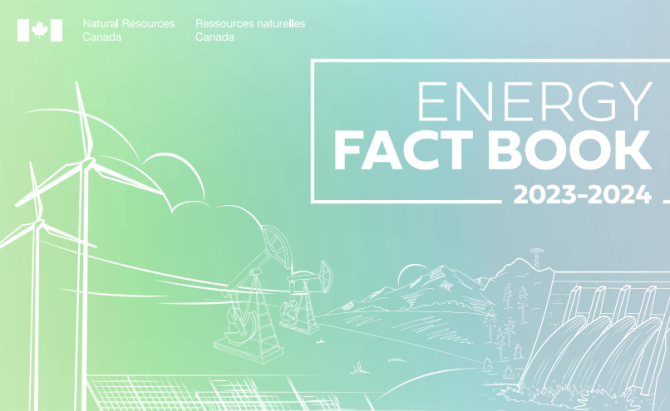NR Canada – Energy Factbook, 2023-2024
Обзор
Canada is blessed with a large land mass and a small population, as well as a diverse range of energy resources.
Its rivers alone contribute close to 7% of the world's renewable water, making hydroelectric power a significant source of energy. Additionally, Canada has the fourth-largest proven oil reserves and the third-largest reserves of uranium, highlighting the country's strength in the energy sector. Canada is also leading the way in innovative energy technologies. Forms of energy that emit low or no emissions are becoming increasingly important in Canada's electricity mix, with wind and solar photovoltaic energy being the fastest-growing sources of electricity generation. Technological advancements, such as co-generation, have also led to more energy-efficient practices and a reduction in greenhouse gas emissions, particularly in the oil sands industry. Ongoing developments in grid-scale electricity storage, carbon capture and storage, hydrogen, and electric and alternative fuel vehicles have the potential to further transform Canada's energy system. The Energy Fact Book has been a valuable resource for Canadians to understand and discuss important developments in the energy sector for over ten years. In 2019, the Canadian Center for Energy Information (CCEI) was launched, bringing together existing energy information in one place to enhance access to resources like the Energy Fact Book. The Energy Fact Book calculates primary energy production using two methods. The first method includes the energy embodied in uranium as primary energy, reflecting the uranium that Canada produces and exports. This provides a more accurate representation of energy production in Canada. The second method, used by international organizations such as the International Energy Agency and the Energy Information Administration, considers domestic electricity production from nuclear energy as primary energy but excludes uranium itself. This discrepancy is due to Canada exporting most of its uranium production, despite its energy density.
Регион:
Published:
Автор(ы):
Доступные языки:
Технологические драйверы:
Нашли неточность или ошибку? Сообщите нам 🙌

